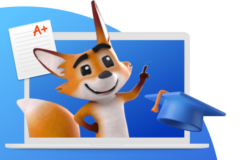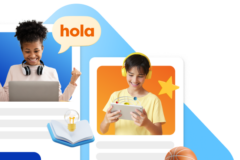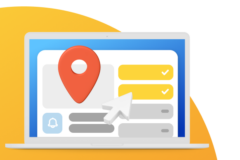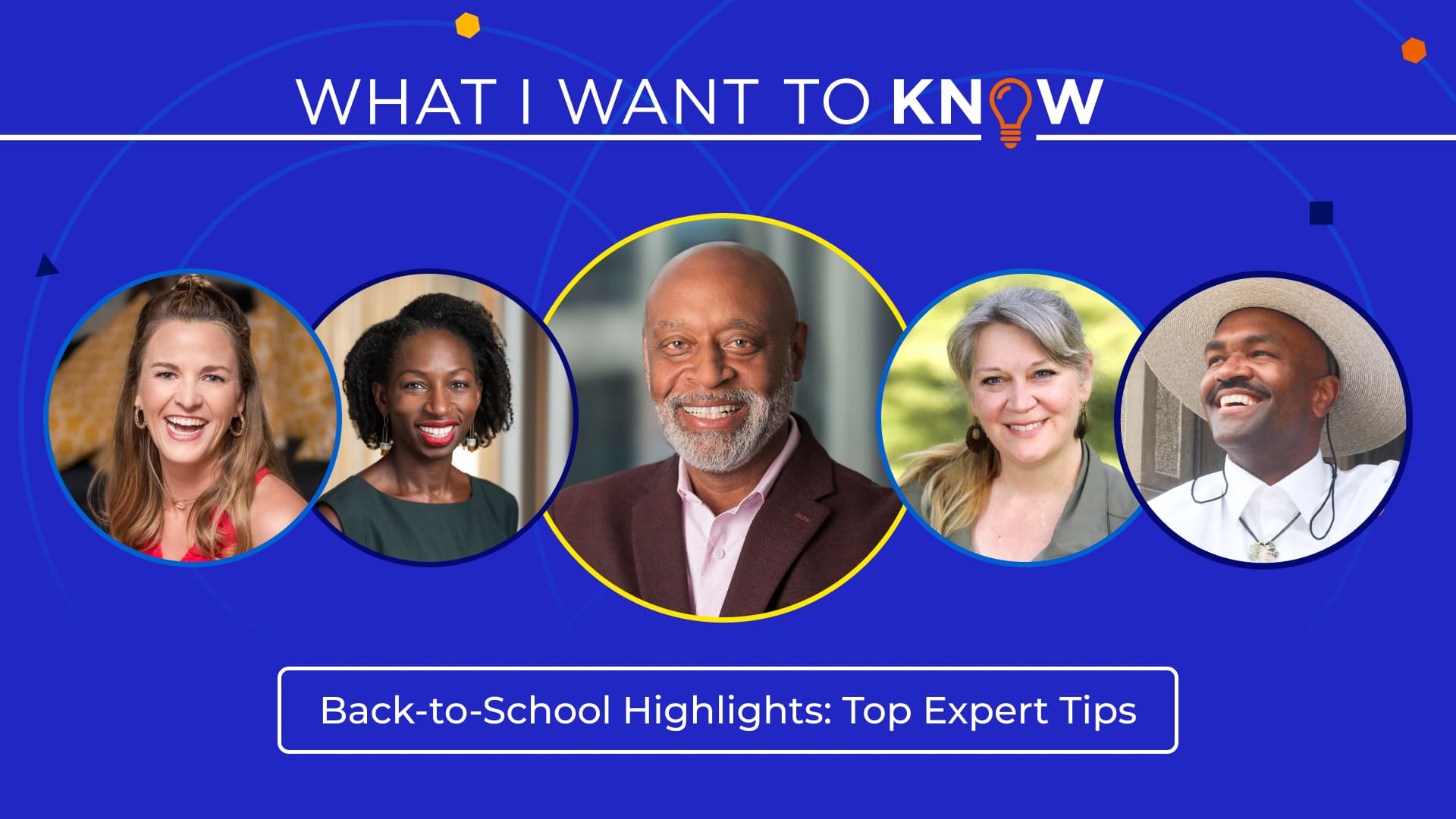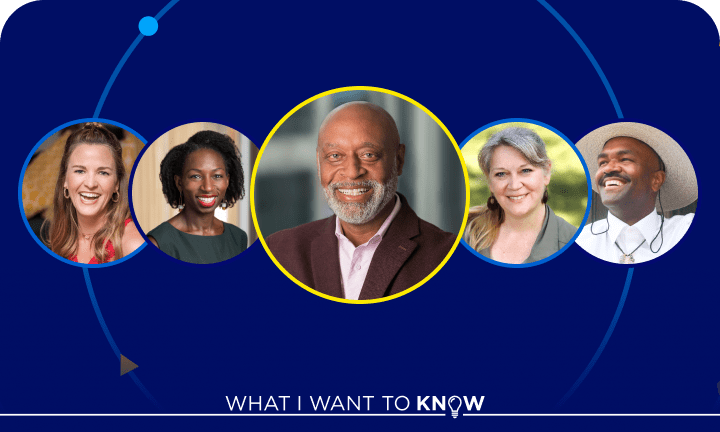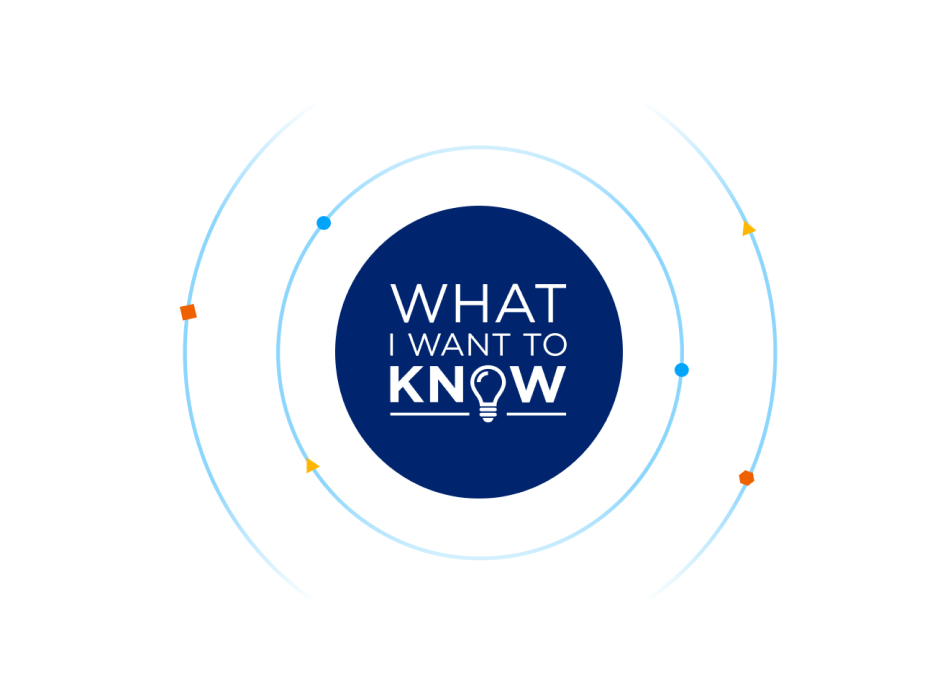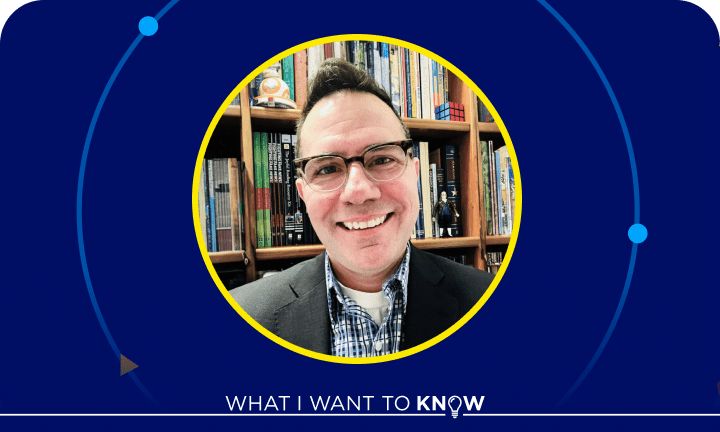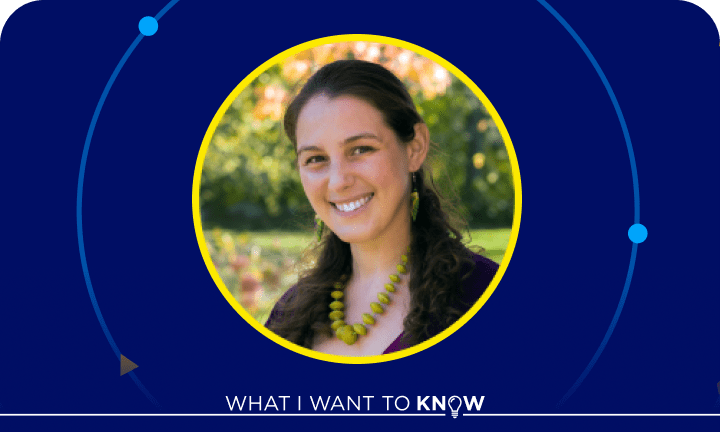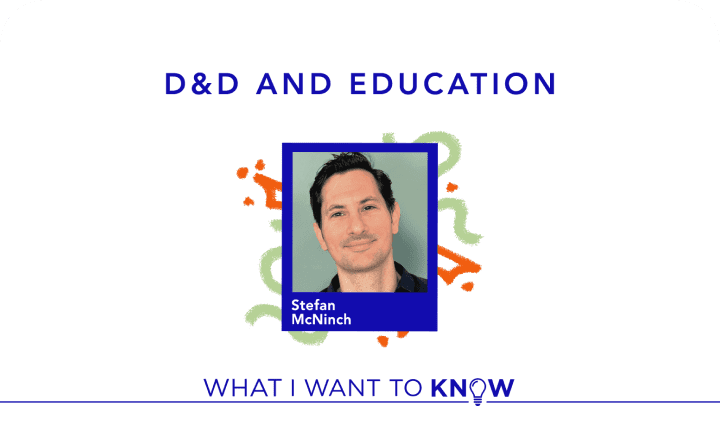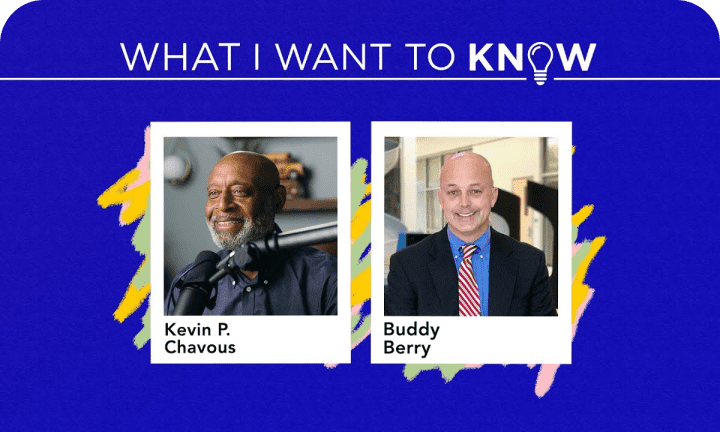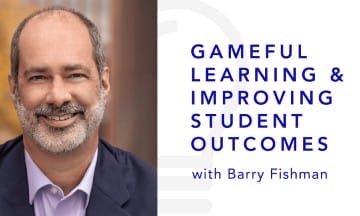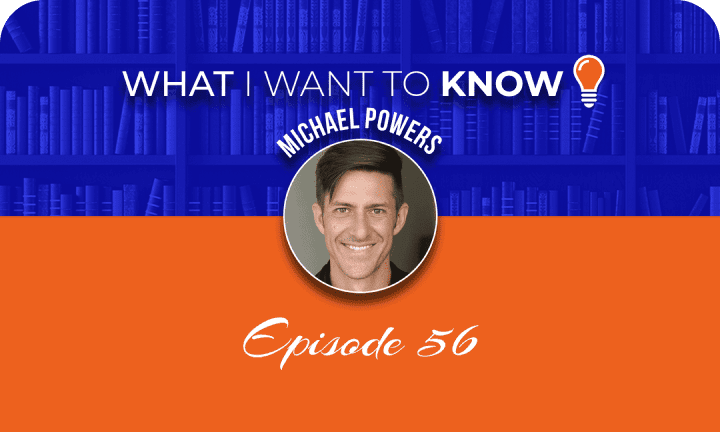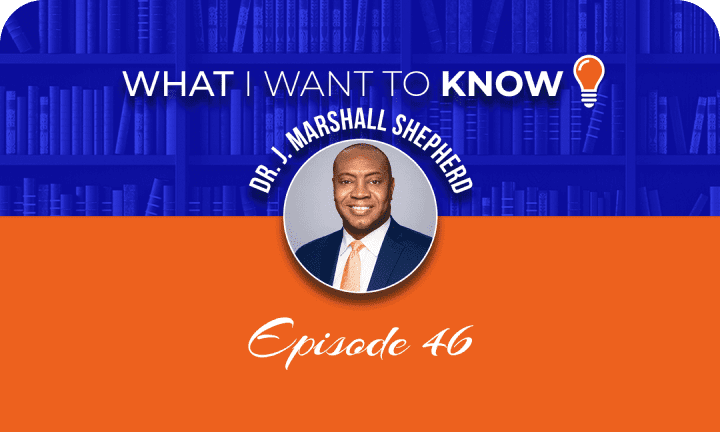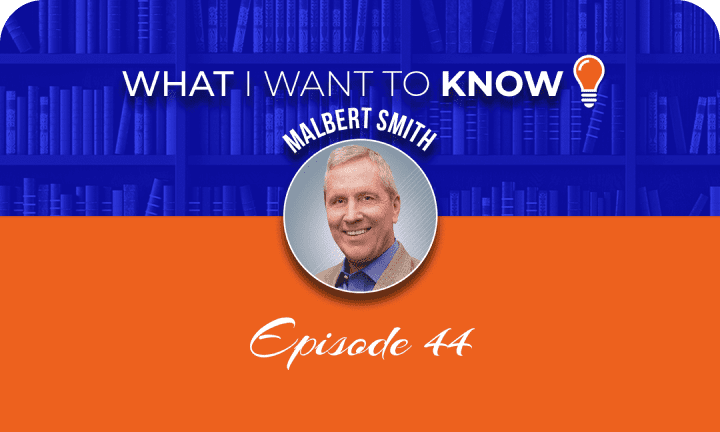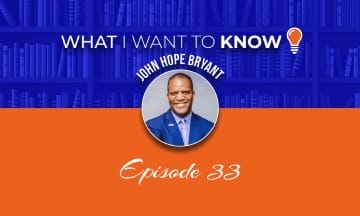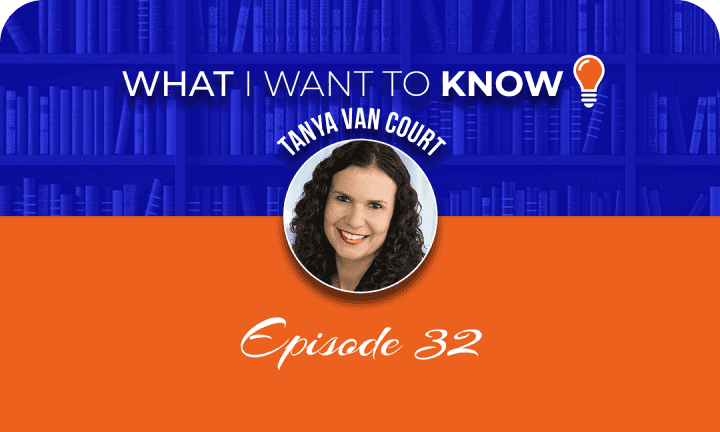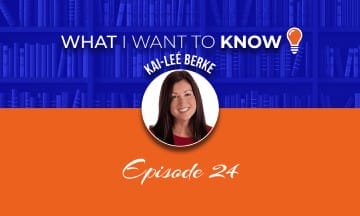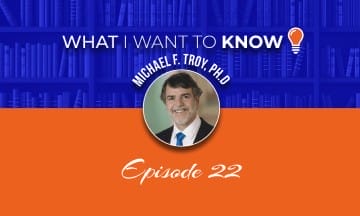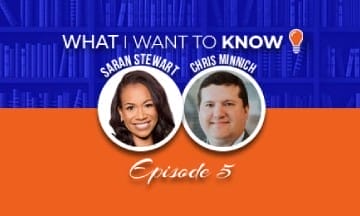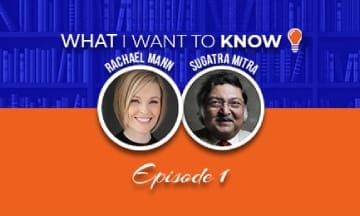September 4, 2024
EP 163: Back to School 2024: Empowering Students Through Storytelling, Mindfulness, Science, and Future Skills
In this special back-to-school compilation episode, host Kevin P. Chavous presents a curated selection of expert advice from “What I Want to Know.” This episode is designed to help parents and students prepare for a successful school year, featuring insights from education experts, industry leaders, and innovative educators.
Listen on: Apple Podcast, Spotify
Meet the Experts
Meet Kate:
Dr. Kate Biberdorf is a chemist, science entertainer, best-selling author, and professor at The University of Texas.
Through her theatrical and hands-on approach to teaching, Dr. Biberdorf is breaking down the image of the stereotypical scientist while reaching students who might otherwise be intimidated by science.
Meet Linda:
Linda Ryden founded Peace of Mind, a nonprofit organization dedicated to equipping children with mindfulness tools.
Linda is also a teacher and the author of six mindfulness-based children’s books.
Meet Kathleen:
Dr. Kathleen St. Louis Caliento is the president and CEO of Cara Collective, a workforce development organization dedicated to transforming the lives of individuals affected by poverty and promoting a more inclusive economy.
Meet Jesse:
Jesse Byrd is an award-winning children’s book author and the youngest African American NPR Foundation Board Member.
Jesse has performed readings of his children’s books to more than 25,000 kids and partnered with Airbnb Experiences to provide families and corporations with virtual storytime experiences during the pandemic.
Kevin P. Chavous: Thank you so much for joining me, Kevin P. Chavis, this year for What I Want to Know. I had the privilege to speak with experts, school leaders, teachers, parents, and students about the most pressing issues in education today. We’ve also had fun exploring what the future of education could hold and how we can encourage lifelong learning.
Here are some of my favorite moments. To catch full episodes, including your favorites, or any you may have missed, subscribe and follow on Apple Podcasts, Spotify, or YouTube.
Dr. Kate Biberdorf: The pandemic really hurt us. We’re going to see these numbers coming out soon. I can see it in my classroom right now. I have students who had chemistry during 2020, and there is a massive dip between the students I had last year and this year. We can see it. But as an educator, I thought, “All right, game on, challenge accepted.”
You are going to leave my classroom at the same level all my other students did. Many good educators are stepping up to the plate. We’re doing things differently. This year we’ve added chunks of curriculum that we never teach, but it’s straight-up sophomore high school chemistry science. We’re teaching this because we’re assuming they didn’t get it, as they missed part of that.
Hands-on is always the way I go, trying to get students doing hands-on experiments and actually getting their hands dirty. The problem with that is budget constraints. I know actually building kits for these students takes time, and I know how difficult that is.
In a very embarrassing way, I’m going to do a shameless plug. I have books. There are the Kate the Chemist books: the Big Book of Experiments and the Awesome Book of Edible Experiments for Kids. Chemistry, in general, is baking and cooking. So you don’t have to necessarily go into the lab.
You could make just tomato soup. You could make something very simple, and that is actually being a chemist. Then you can enjoy it and eat it. Tomato soup is a horrible example; I should have said chocolate chip cookies—something that the students would actually want to eat.
But all of that is being a scientist. So just stepping back a little bit, being creative, and trying to speak their language goes a long way.
Lynda Ryden: Mindfulness is really just about paying attention. In practice, we’re teaching three different things. We’re teaching kids breathing practices they can do.
These are simple things like take-five breathing, for example, where you trace your hand. When you trace up, you breathe in, and when you trace down, you breathe out. You just take five slow, deep breaths while tracing your hand. That could be a mindful moment. We do something called four-square breathing where you’re drawing a little square in front of you, and you breathe in.
Then you hold your breath, then you breathe out, and then you wait. So we teach these breathing practices and explain to the kids why they’re important, how their brains work, and how the breathing practices are related to brain science. This makes it a lot more accessible for kids, especially older kids who might be more skeptical about this whole mindfulness thing.
Then we have what we call metacognition practices, where you start to pay attention to what your mind is doing and you pay attention to your thoughts. I always say to the kids, “Oh, I can feel that I’m getting angry right now. I’m getting frustrated that some people aren’t listening.”
I would describe the feeling: “I feel it right here in my chest, so I’m going to stop and take a couple of deep breaths.” When I would do that, suddenly you could hear a pin drop in the room. I would be a little dramatic about it, but I would take my deep breath. They’re all watching, and I would say, “Okay, can somebody tell me why I was starting to get angry? Why did my amygdala start to think that I was in danger?”
Kathleen St. Louis Caliento: We’ve helped place more than a thousand people per year into jobs annually, not only in Chicago but beyond Chicago through our affiliations as well. We’re also helping to shift some of the policies and perspectives that happen in hiring today.
We’re really excited about that work. We are seeing many more roles that require access to and an understanding of technology, digital roles, et cetera. What we’ve done even here at CARA Collective, as an example, is start a program in just one of our co-location spaces in Belmont Cragin, working with Northwest Center.
We had offered digital literacy services to the residents and participants we were working with in that neighborhood and community. What our amazing chief program officer realized is this is actually something that is needed and required by all of our participants. We helped place middle school students in companies in downtown Chicago for a year, having a mentorship with someone.
So if there was a kid on the south side of Chicago who loved math, he should know that KPMG exists and is a company where he could hone those skills as an adult. The value proposition to companies was really, this is the pipeline that’s coming up. Unless we help them understand the possibilities and opportunities that are available and open to them out there, they’re not going to see that as an option.
Kevin P. Chavous: How do you think we should be utilizing this notion of storytelling to reach our children and give them the confidence they need to be inspired to do better and be better?
Jesse Byrd: I think it’s twofold. Part of it is reflections. You want to make sure that the stories they’re consuming are reflective of the beautiful diversity of this world and lived experiences. You want to make sure kids feel seen. I’m a firm believer that us not writing about difficult topics as storytellers for young kids doesn’t mean kids aren’t experiencing them.
Just because we say we’re not going to touch childhood poverty because it’s tough and we may say the wrong thing, we’re not going to touch this and that—you want to do it with care and consideration. But there are kids really experiencing these realities, and to not have it reflected in any of the stories that they consume because we’re afraid of the PR backlash isn’t really serving them.
I would say that’s probably one of the biggest things for me: to make sure that the stories are reflective. The second thing is story literacy and story science. There are so many stories being thrown at all of us, especially kids.
Young minds through social media, through the news, through friend groups—to be able to unpack and lift the hood on the story and see continuity issues or things that don’t quite make sense. It’s a little touch of journalism almost where you have a better chance of knowing what you’re looking at if you can think about it analytically.
And you have some context on stories that have been told before, so you know when somebody’s doing a bit or when they’re pulling from streams of something that has dog-whistling things that have been done in the past. I think it’s extremely important for kids to have a better relationship with story and a better understanding of story, just as you mentioned, Kevin.
Even if you don’t want to be a writer, if you want to pitch your business for more funding, if you want to write a grant, if you go into a job interview, a lot of times they’re asking for very short stories. “Tell me about a time when…” All of these are really short stories, and understanding how to package that for the audience in a way that resonates
and that is clear and concise is only going to aid you in whatever it is that you want to do in life, even if it isn’t storytelling, because as you mentioned, story is literally in everything. It’s inescapable.
Kevin P. Chavous: How do you teach a kid that? I almost feel like there should be a separate class on how to discern through the storytelling examples out there.
You said something that really resonated with me, Jesse, because I was in public life in D.C. for many years. So I would be interviewed by the media, and then I would see the story. Because I was involved in local government, I would see these stories, but I also would know what was really going on behind them.
So I was able, over time, to look at the first two or three sentences of a story, of a newspaper article, and I could figure out, without reading the whole thing, any bias of the reporter, any input by the editor, and also the types of sources they were looking for in order to feed the narrative.
So now when I look at the news because of that experience, as you alluded to, I understand what’s going on even before the whole thing is unpacked. How do we get our kids to understand that, especially with all of the storytelling images, good, bad, and ugly that’s thrown at them?
Jesse Byrd: I couldn’t agree more. One of the things that I like to do is work with kids on making a story. I think sometimes when you lift the hood and you actually get to be a part of making something, you understand it better because you see how all the parts move. You’ve put that gear there on character, on world, on story, on consistency.
One of the things we do is a story-making workshop, as I just mentioned, where we transform kids into published authors. Usually kids between first and eighth grade, depending on which grouping we’re going for. They’ll either make a children’s picture book or a comic/graphic novel.
Besides giving them the confidence of becoming published authors and hopefully boosting their relationship with literacy by seeing how stories are put together and putting one together themselves, one of my hopes is that they’ll be able to have a better understanding of story when they’re deciphering and unpacking the stories that are being told to them.
Because as you mentioned, stories can be great agents of change and positive change, and they can also be weaponized. Not only the stories that you’re being told but the stories that you tell yourself. Stories are just so fundamentally important in all degrees.
It’s helpful to get to know them better. So that’s one of the ways that I approach it: I like to make stories with kids. So it doesn’t seem like this far-away thing. Part of it too is that a lot of us carry around the myth that storytelling is a solitary endeavor when almost every story you read on the bookshelf at least had an author and an editor. Storytelling really is a team sport.
I don’t think that’s really told enough, especially the stories I make—the illustrated stories and children’s books. We may have four or five people on a team: an author, an editor, an illustrator, an art director, and a project manager. All of those people are essential to that product that gets put into a kid’s hand.
Kevin P. Chavous: Thanks for listening to What I Want to Know. Be sure to follow and subscribe to the show on Apple Podcasts, Spotify, or your favorite podcast app so you can explore other episodes and dive into our discussions on the future of education. Write a review of the show. I also encourage you to join the conversation and let me know what you want to know using hashtag WIWTK on social media.
That’s hashtag WIWTK. For more information on Stride and online education, visit stridelearning.com. I’m your host, Kevin P. Chavous. Thank you for joining What I Want to Know.
About the Show
Education is undergoing a dramatic shift, creating an opportunity to transform how we serve learners of all ages. Kevin P. Chavous turns to innovators across education, workforce development, and more to ask: “How can we do better?”
Related Podcasts
Listen to more podcasts about this topic.
Featured Resources
Discover more resources that address the topics impacting students, families, and educators today.

